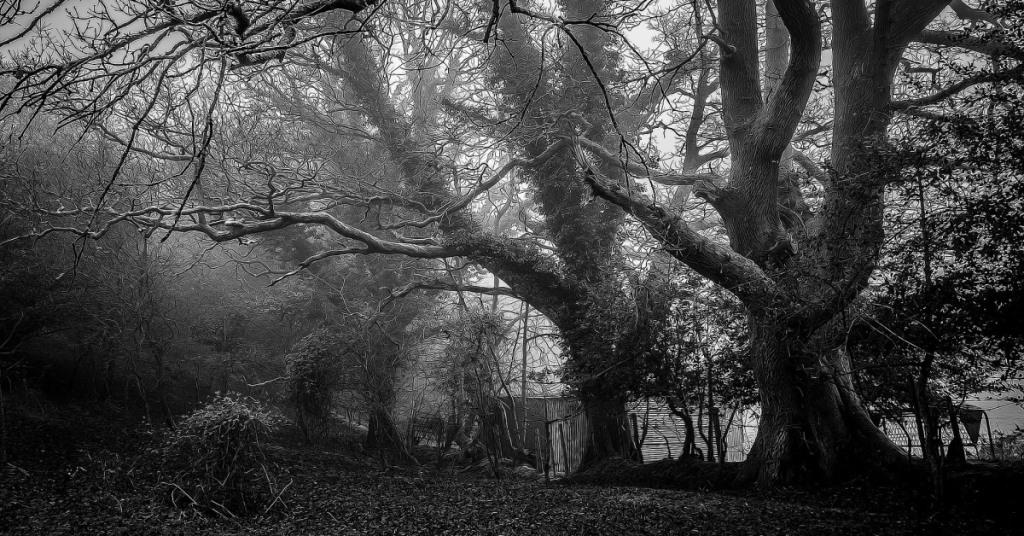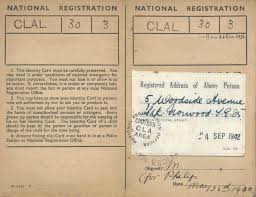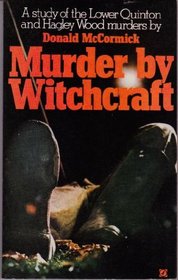While listening to some podcasts on the Bella in the Wych Elm mystery, I was struck by one claim which didn’t sound right. This extract is from the Unsolved Murders: True Crime Stories podcast, Episode 165 (part 1 of their Bella trilogy). The excerpt below comes from around the 16:30 mark of the podcast.
Narrator: The final and most promising item was a woman’s identification card. The investigators were relieved and briefly hoped that the skeleton belonged to the woman named on the card, but when they visited the address on the card they found its owner was still alive.
[Dramatization]
**sound of knocking at door**
Woman: Hello?
Officer: Hello ma’am, sorry to bother you at home. Your address was listed on this identity card and we wondered if you knew the owner.
Woman: Oh thank you, that’s my card!
Officer: Yours?
Woman: Yes, I’ve been missing it for months. Wherever did you find it?
Officer: That’s just it, this card was found in Hagley Wood.
Woman: Hagley Wood,; you mean where they found that woman in the tree.
Officer: Well, yes, we actually thought this card might have been hers.
Woman: But that’s so strange, I’ve never been near Hagley Wood in my life.
Officer: Really?
Woman: Never even been to Hagley. Can I have my card back?
Officer: Sure you can have it back, just as soon as we catch whoever put that lady in that tree.
Narrator: Mysteriously, the woman had no knowledge of how her ID card had ended up in Hagley Wood and claimed to have never been there in her life. With no evidence to discount her story the police were forced to move on.
This did not ring true to my ear and I decided to do a bit of digging. The obvious thought that came to me was… perhaps this woman had stolen Bella’s identity. Perhaps it was actually Bella who lived at that address, and this woman had had her knocked off and stepped into her life.
But… there were also several problems with this theory… the most obvious one being that no-one could survive for long in wartime Britain (1943) without a valid identification card and ration book.
In the dramatization, the woman says she has been missing her card for months. That would clearly be impossible since identification cards needed to be produced when requested by the police, when opening or withdrawing from a Post Office (bank) account and when accessing National Health Services. Logically, the woman, upon noticing that her card was missing, should have gone and applied for a replacement. Perhaps she didn’t, because she had stolen it in the first place? Hmmm…
This little story seemed rather odd, and I decided to go back to the police files on the Bella case and try to trace the origins of the story. Perhaps I could even find the name and address of the woman. But… after much searching, I found no reference to the identity card. I checked with Pete and Alex Merrill, who have sifted the police files with a fine-tooth comb and… they said that they had found no reference to the identity card either. Stranger and stranger.
ID Card in the Literature: Coley & Sparke
Interesting… I had a look in Joyce Coley’s booklet and Andrew Sparke’s book, and they both mention the identity card but give no references. Their versions differ slightly from the podcast dramatization:
An identity card was found in the wood with the name and address of a woman from a town some distance away. This clue was also pursued. The woman was not aware that her card was missing and she had never been to, or heard of, Hagley Wood. There was no further work on how her card came to be placed there. (Joyce M. Coley, p. 7)
In this piece, the woman didn’t even know her card was missing, which seems even more far-fetched given conditions in wartime Britain. It would be the same as me not noticing that my driver’s license was missing.
We then have the account from Andrew Sparke:
The search of the area around the hollow tree turns up a woman’s identity card but at the address stated on it the presumed victim is discovered alive and well. If baffled as to how her identity card could have ended up in Hagley Woods, a place she’s never been.
Very brief and doesn’t make clear if the woman knew her card was missing or was clueless as to its disappearance.
What is also baffling is that the police did not question the woman further as to her fellow lodgers. Was there someone else within the household who could have taken her card? Could she have been lying? Was there any proof that she was actually the person listed on the card? How old was she? Why was she not considered a prime suspect?
And the questions multiply.
Back to McCormick
Pete Merrill, while confirming there was no mention of the ID card in the police files, said that the earliest reference he and Alex had found was in Donald McCormick’s 1968 book, Murder by Witchcraft.
Ah yes, back to McCormick, a well-known source for all sorts of rumours and fables. Somehow this does not surprise me. Here’s what McCormick has to say about the identity card…
At last, however, a clue was reported. An identity card was found lying under a sodden bush near to the site of the crime. It was a woman’s identity card and the police hoped it might belong to the victim. They called at the address in the Midlands which was written on the card and asked to speak to the woman of that name. There was no hesitation on the part of the woman the police saw: before they had announced the reason for their call she readily admitted her identity.
‘Then perhaps you would please let us see your identity card,’ said the detective.
‘Certainly,’ replied the woman, and she went to get her handbag. But when she searched through the bag the identity card could not be found. She could not think how she had lost it. As far as she could remember it had always been kept in her handbag and she had never missed it before.
‘Then how do you account for the fact that your identity card was found in Hagley Wood?’ inquired the detective, producing it for her to examine.
The woman was incredulous. “I just don’t know,’ she said, completely bewildered. ‘I have never been to Hagley Wood in my life.’
Nor could the police prove she was lying. And even if she had been, the mystery of the identity of the skeleton in Hagley Wood remained unsolved. (Murder by Witchcraft, p. 65-66)
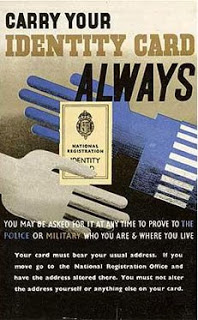
(poster from wartime Britain)
This too, is rather an odd account. An identity card found lying under a sodden bush… Given that the identity cards were made out of paper card stock, one could wonder at the condition of the card which was, presumably, also sodden. The fact that the woman had lost track of her identity card, and could not find it in her handbag, makes one wonder when last she accessed her card. At least there is a hint that the woman might have been lying… but no police follow-up.
Now, where McCormick got his story from is a mystery. Given that he had no access to the police files, one might guess that he was relying on anecdotal stories from eye-witnesses and/or folk from the area. And, as with many stories, things can get exaggerated rather quickly. Perhaps the original source seed of the identity card story was the discovery of a handbag in Hagley Wood.
The Handbag of Hagley Wood
There are a couple of police reports from the Bella police files, which mention a handbag found in Hagley Wood in November 1944. This was about 19 months after the discovery of the skeleton in the tree. Was it connected to Bella or not?
On 17 November, 1944, Special Constable R. Sheppard was in Hagley Wood, “by virtue of being connected with the shooting rights of this Wood”, and discovered a brown leather lady’s handbag “some distance” from the Wych Elm tree. The discovery was reported to the Chief Constable of the Worcestershire Police on 20 November, by Police Constable (302) Arthur J. Pound.
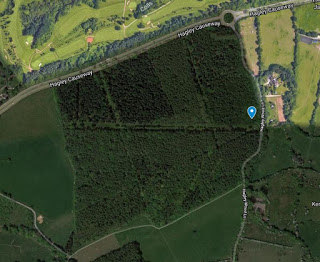
(thanks to Alex Merrill for identifying the location in his first book on Bella)
This may be the same police constable, Jack Pound, who took an axe to the tree to widen the opening when the police first investigated. This is confirmed by the 1939 National Register in which Arthur John Pound (1895-1954) was a Police Constable living at the Bromsgrove Police Station with his wife (Rhoda Auden) and a child. Pound had served as a Bombardier with the Royal Garrison Artillery in the First World War.
On the morning of 18 November, 1944, P.C. Pound accompanied Sheppard to the Wood and found the empty, dilapidated handbag at the base of a small birch tree. The handbag was 9.5″ x 6.5″ with no separate compartments. It was made of brown leather, nickel plated strengthened corners and a nickel plated snap fastener. According to Pound, the handbag had obviously been exposed to the elements for quite a while since it was falling apart and was covered with green moss on top. The handbag had been found just north of the Elan aqueduct, just off of Hagley Wood Lane, about 170 yards north of the Wych Elm.

The Clent Police Station records were searched and a lady’s handbag of a similar description had been reported stolen from a motor car in Hagley Wood Lane on 16 December 1939. The owner of that handbag was Doctor Dorothy Edith Marhkam [sic] of 25 Elgin Road, Alexandra Park, London, N.22. Her address in 1944 was No. 1 Compton Court, Compton Road, Wolverhampton. When stolen, Dr. Markham’s handbag had 15/- in cash, her driving license and a fountain pen, but none of those articles were found in Hagley Wood. Pound closed his report by noting that he planned on visiting Dr. Markham to determine if it actually was her handbag.
Two days later, on 22 November, Pound submitted another report in which he stated that he had met with Dr. Markham that morning at 8:15 am. He showed her the handbag and she confirmed that it was hers. Pound concluded that the handbag had no connection with the Hagley Wood murder.
Unlike the story of the identity card, Dr. Markham presumably never said that she had never been to Hagley Wood in her life, since she had reported the handbag stolen from Hagley Wood Lane!
Dr. Dorothy Edith Markham
I did do a little poke at Dr. Dorothy Edith Markham, just in the interests of completion. She is listed in the 1939 Electoral Register as living at the General Hospital on Steelehouse Lane in Duddeston. This is likely Birmingham General Hospital, right in the heart of Birmingham. Which makes sense, given she was a physician.
The 1942 UK Medical Directory has her listed as:
MARKHAM, Dorothy Edith, 25, Elgin Rd., Alexandra Park, N. 22 — M.B., Ch.B. Birm. 1938; Res. Anæesth. Gen. Hosp. Birm.
From this, we can deduce that she had a Bachelor of Medicine as well as a Bachelor of Surgery. She had completed her degree in Birmingham in 1938 and served her residency at the General Hospital in Birmingham as an anaesthetist.
A bit more digging and the Medical and Dental Students List from 1933 notes that she received her Oxford School Certificate in December 1931. She began studying at the University of Birmingham in June 1933.
Finally, the 1939 National Register has her listed as a Medical Practitioner at the General Hospital in Birmingham. She was born 9 June 1913 and later changed her surname to Stumbles. That gives us enough to trace her birth and death. Dorothy was born 9 June 1913 in Tamworth, Staffordshire. In the first quarter of 1944, she married George Leslie Stumbles in Wolverhampton. Dorothy died on 12 January 2004 in Dorking, Surrey at the age of 91.

As an aside, in case Dorothy was not enough of an aside, she had a sister, Winifred Mary Markham, born 1910, who also became a doctor, albeit with slightly more impressive credentials. In the same 1942 UK Medical Directory, listed just below Dorothy, is Winifred Mary Markham. She received her Bachelor of Science in 1933 from Birmingham. She had attended University College London and W. London. By 1940, she belonged to the M.R.C.S. (Membership of the Royal Colleges of Surgeons – England) and to the L.R.C.P. (Licentiate of the Royal College of Physicians – London). Born in 1903, Winifred Mary had a long and distinguished medical career. In the mid 1960s, she was Deputy Medical Officer of Health for the County Borough of Darlington (County Durham). At that point, she had also acquired a D.C.H. (Diploma in Child Health) and D.P.H. (Diploma in Public Health). Winifred Mary passed away in 1991 with an estate valued at over £200,000. But, I digress…
Origins of the ID Card Story
One can see how the story of the handbag might have been twisted a bit over the 25+ years before McCormick wrote his account. A handbag which had once contained an identity document (driving license).. a woman who was confronted with the found object. But beyond that, the similarities cease.
Given that there are some files missing from the police records of the Bella case, specifically the eye witness statements from the early days of the case… I suppose there is a small possibility that there was actually an identity card and a woman who denied all knowledge of how it ended up in Hagley Wood… But without any evidence… all we have is McCormick’s book, which has already been shown to contain a number of fabricated stories. The story of the identity card is likely another one of them…
